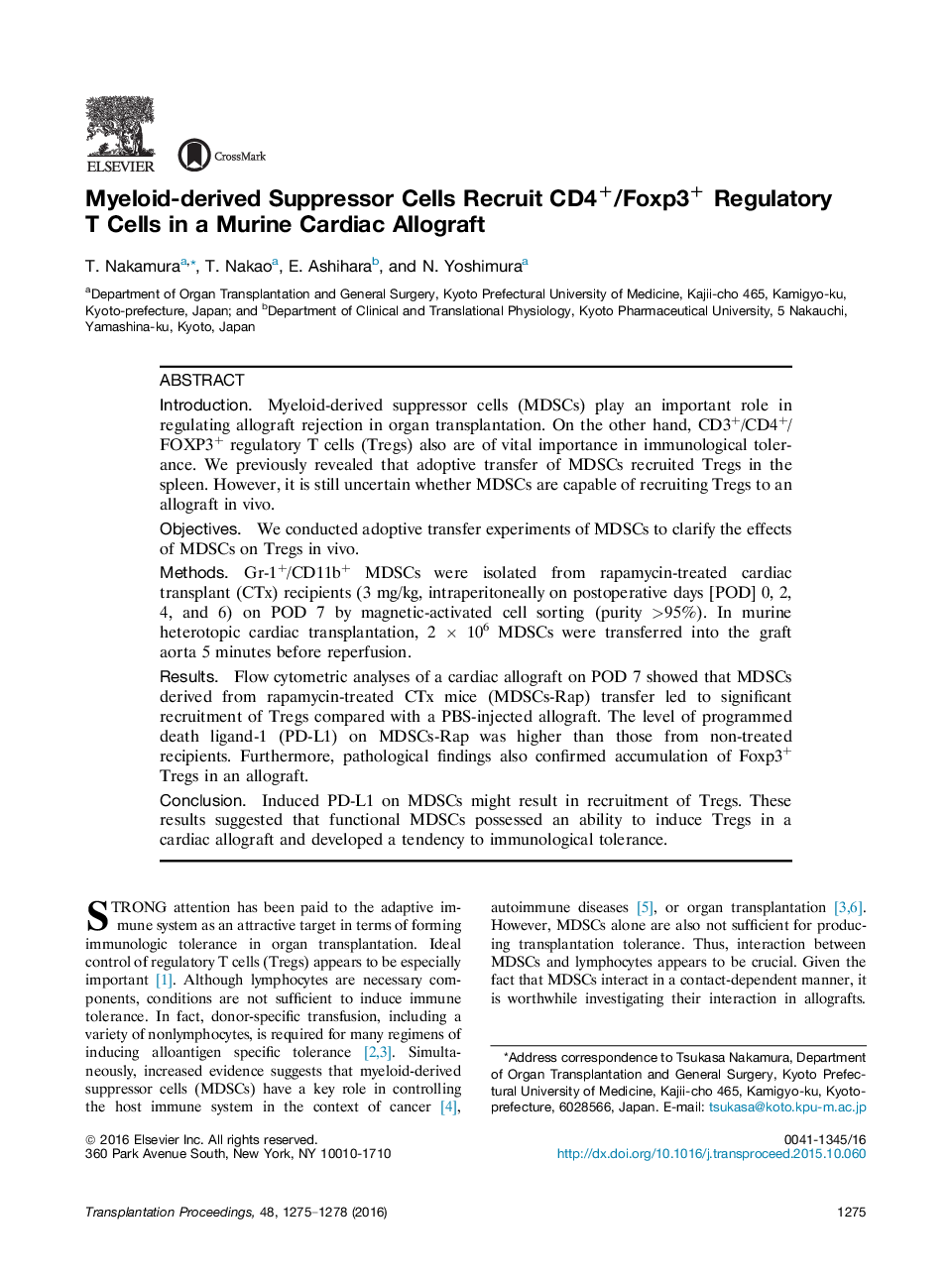| Article ID | Journal | Published Year | Pages | File Type |
|---|---|---|---|---|
| 4256005 | Transplantation Proceedings | 2016 | 4 Pages |
•Some agents, such as rapamycin, reinforce suppressive function of myeloid-derived suppressor cells.•Functional myeloid-derived suppressor cells recruit CD4+/Foxp3+ regulatory T cells in a murine cardiac allograft.•Myeloid-derived suppressor cells might induce regulatory T cells through the PD-1-PD-L1 interaction.
IntroductionMyeloid-derived suppressor cells (MDSCs) play an important role in regulating allograft rejection in organ transplantation. On the other hand, CD3+/CD4+/FOXP3+ regulatory T cells (Tregs) also are of vital importance in immunological tolerance. We previously revealed that adoptive transfer of MDSCs recruited Tregs in the spleen. However, it is still uncertain whether MDSCs are capable of recruiting Tregs to an allograft in vivo.ObjectivesWe conducted adoptive transfer experiments of MDSCs to clarify the effects of MDSCs on Tregs in vivo.MethodsGr-1+/CD11b+ MDSCs were isolated from rapamycin-treated cardiac transplant (CTx) recipients (3 mg/kg, intraperitoneally on postoperative days [POD] 0, 2, 4, and 6) on POD 7 by magnetic-activated cell sorting (purity >95%). In murine heterotopic cardiac transplantation, 2 × 106 MDSCs were transferred into the graft aorta 5 minutes before reperfusion.ResultsFlow cytometric analyses of a cardiac allograft on POD 7 showed that MDSCs derived from rapamycin-treated CTx mice (MDSCs-Rap) transfer led to significant recruitment of Tregs compared with a PBS-injected allograft. The level of programmed death ligand-1 (PD-L1) on MDSCs-Rap was higher than those from non-treated recipients.Furthermore, pathological findings also confirmed accumulation of Foxp3+ Tregs in an allograft.ConclusionInduced PD-L1 on MDSCs might result in recruitment of Tregs. These results suggested that functional MDSCs possessed an ability to induce Tregs in a cardiac allograft and developed a tendency to immunological tolerance.
